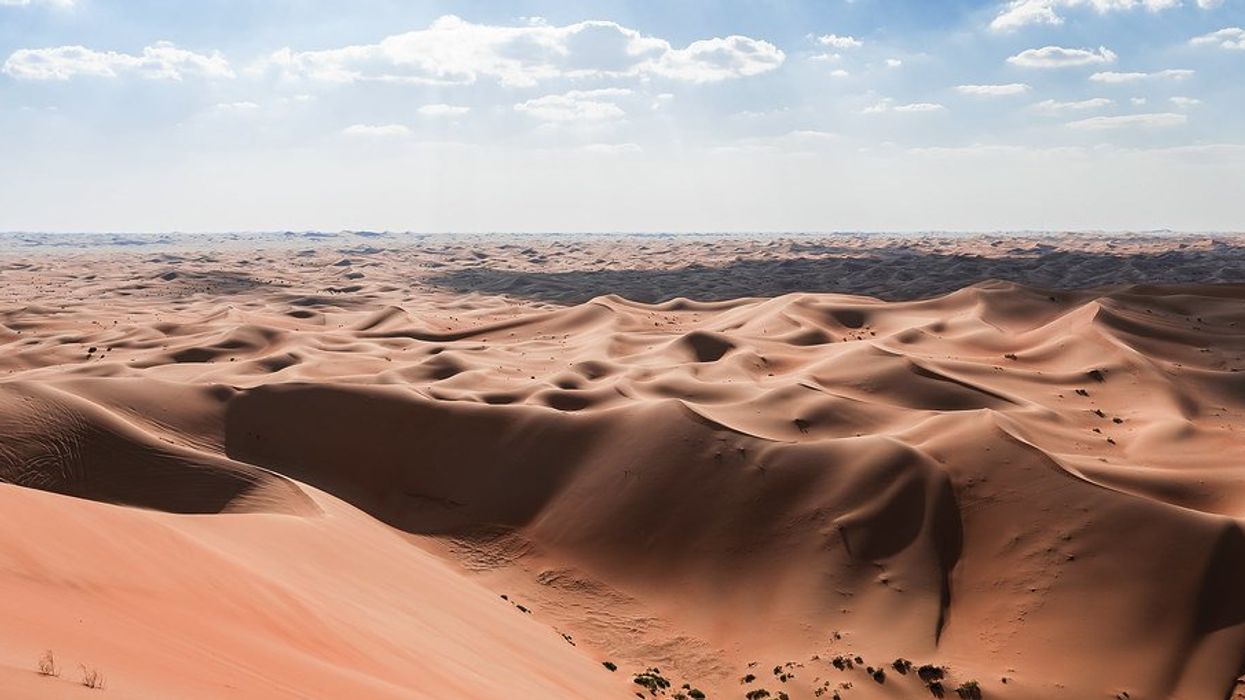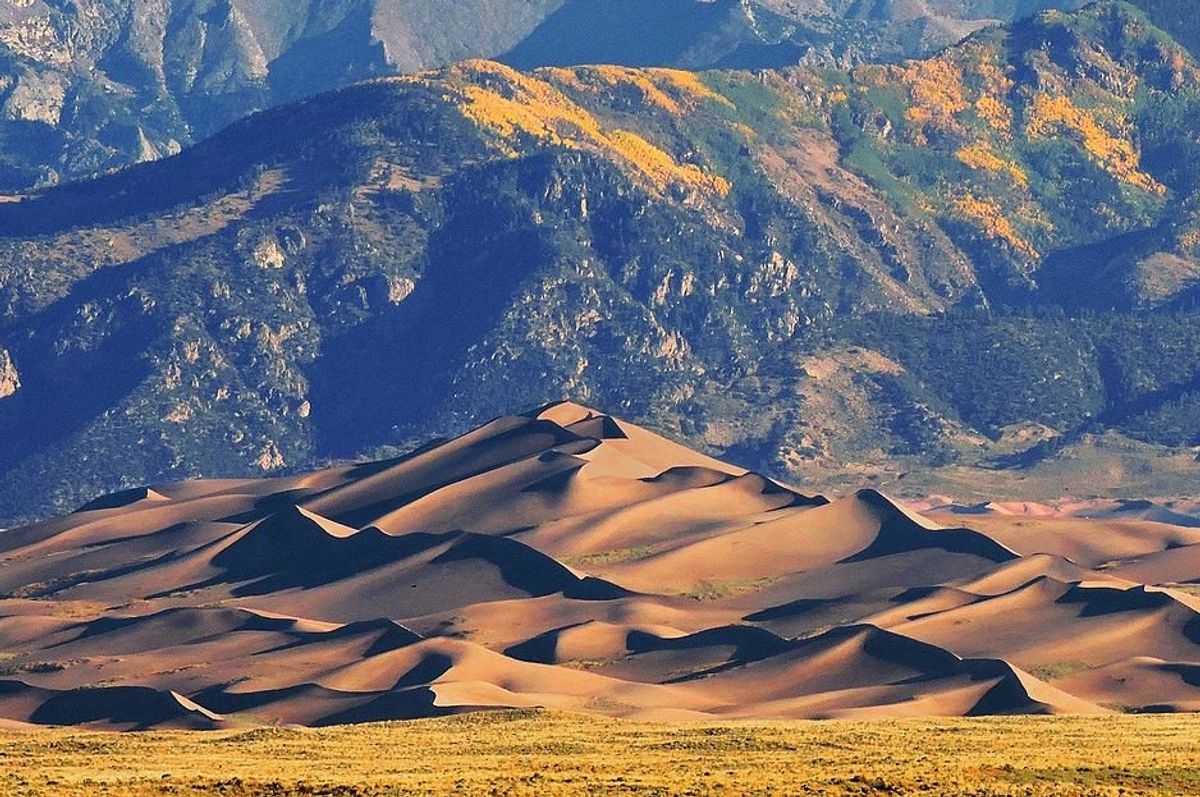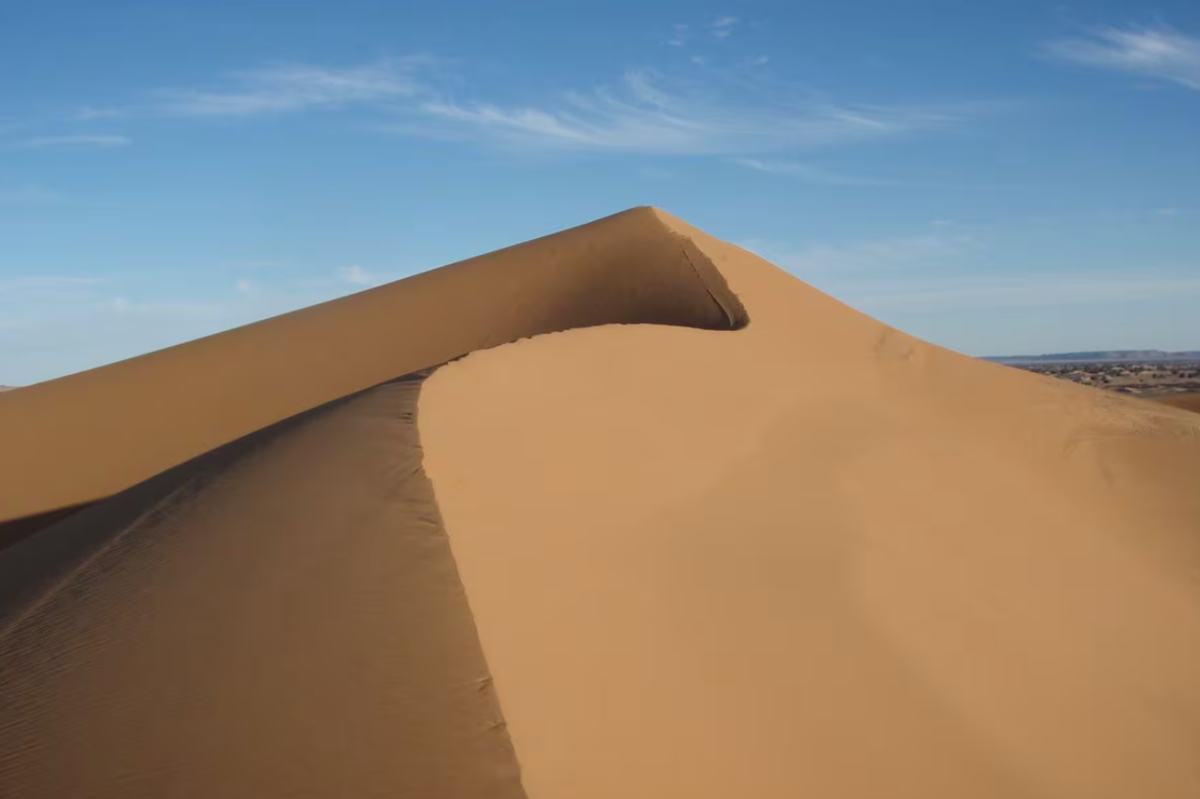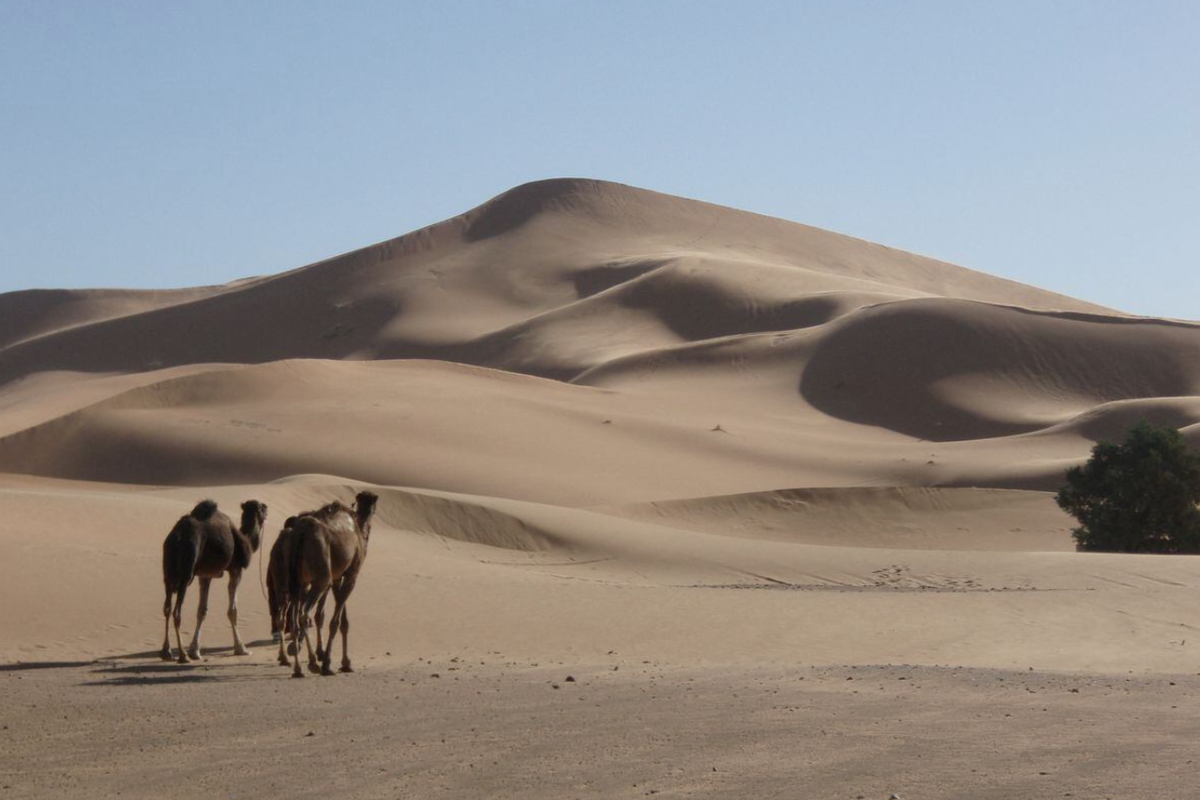Harriet Brewis
Mar 11, 2024

Ubiquitous but enigmatic: Star Dunes have left experts scratching their heads for decades
Dune 2 has only just hit cinema screens, but some scientists dedicate their lives to looking at sand.
And now, a team of researchers has discovered the truth behind one of the most enigmatic desert formations in the world.
So-called star dunes – named as such because of their multi-armed shape – are understood to be the tallest dunes on Earth and can be found all over the world. Yet, very little is known about them.
Indeed, star dunes scarcely feature in the world’s geological records, which has left scientists flummoxed for decades.
After all, these giant sand pyramids appear in countless modern deserts across Africa, China, North America and Arabia. And the tallest, in China’s Badain Jaran desert, measures a staggering 300 metres (984 feet) high.
Plus, they have been located elsewhere in the solar system, namely on Mars and Saturn’s moon Titan.
So why have they so far been largely omitted from the anals of history and geology?

The issue, according to Charles Bristow – professor emeritus of sedimentology at University College London – is that researchers haven’t really known what to look for.
He explained to Live Science that the structures are particularly difficult to study because they’re typically found in remote locations, and trying to analyse hundreds of feet of shifting sand is no mean feat.
"Star dunes are formed in areas with complex wind regimes, which means winds blowing from different directions, and net sand accumulation, points within the desert where big piles of sand can be blown around to form giant dunes," Bristow explained in separate comments reported by Reuters.
Nevertheless, Bristow, his co-author Geoff Duller, of Aberystwyth University, and their colleagues have now successfully completed the first comprehensive study of a star dune’s internal structure and have calculated how long it took to form.
They took as their subject a star dune located in southeastern Morocco, known as Lala Lallia, meaning “highest sacred point” in the Berber language.

Using a mineral dating technique that pinpoints when sand grains deep inside the dune last came into contact with sunlight, the team estimated the base of the dune to be around 13,000 years old.
They also used a ground-penetrating radar, which can detect small differences in sand grain sizes and water content beneath the dune's surface, Live Science notes. This enabled them to build a picture of the dune's interior layers.
Their research threw up two particularly notable findings: the age of Lala Lallia itself and the rate at which the dune is moving.
The scientists found that it took less than 1,000 years for the sand pyramid to form, and that it is moving west across the desert at the rate of around 50cm (around 20 inches a year).
"The thing that stood out most was how young it is," Bristow said. "We expected that a sand dune that is 100 metres high was going to be quite old … thousands of years, maybe tens of thousands of years. And it turned out that this dune was 900 years old."
In a separate statement, Duller added: “These findings will probably surprise a lot of people as we can see how quickly this enormous dune formed, and that it is moving across the desert at about 50 cm a year.
“These fantastic star dunes are one of the natural wonders of the world.”

The breakthrough research suggests that Lala Lallia formed at around the same time as the Younger Dryas event, an abrupt cooling period in Earth’s history.
It also reveals that the dune stopped growing for a period of 8,000 years, before ramping up during the last millennium.
This speed of formation and the rapidity with which it’s sands are shifting should help more star dunes to be identified in the geological record, as Science Alert notes.
While many star dunes are known today, only a single ancient one has been found preserved as sandstone in the geological record, dating to about 250 million years ago, in Scotland.
By revealing their internal structure, the researchers said their findings provide a guide for geologists to identify more sandstone remnants of ancient star dunes.
"Using ground penetrating radar to look inside this star dune has allowed us to show how these immense dunes form, and to develop a new model so geologists know better what to look for in the rock record to identify these amazing desert features," Bristow said.
“This research is really the case of the missing sand dune,” Duller added. “It had been a mystery why we could not see them in the geological record.
“It’s only because of new technology that we can now start to uncover their secrets.”
Sign up for our free Indy100 weekly newsletter
Have your say in our news democracy. Click the upvote icon at the top of the page to help raise this article through the indy100 rankings
Top 100
The Conversation (0)












